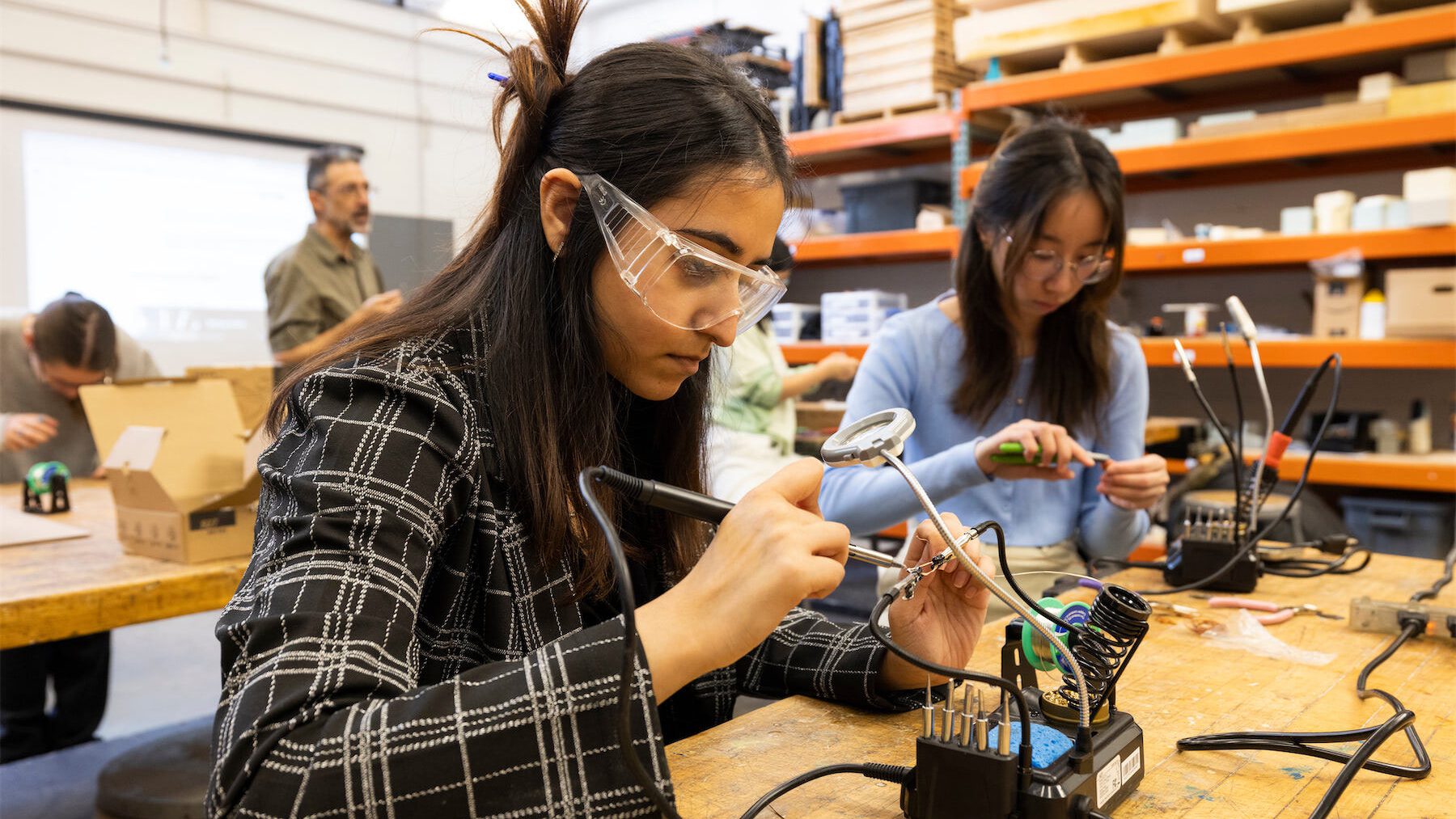
Graduate Programs: MDes
-
Will I have a personal studio space?
Yes, you will have dedicated desk and storage space within an open plan studio with moveable walls, partitions, furniture, and storage to facilitate collaboration and a wide variety of activities including lectures, group discussions, and individual studio work.
Each graduate student will have a dedicated desk within the graduate studio space. Students are highly encouraged to work in the studio to fully participate in this unique collaborative, generative studio environment. The graduate building is equipped with fabrication spaces to facilitate your day-to-day work, and have 24/7 access as well to the making facilities at the Art & Architecture building, including digital fabrication, wood and metal shop, and printmaking. The graduate building community includes the MFA Fine Arts students and the faculty studios.
-
How many students are in the MDes graduate program?
We are looking for a cohort of 10-12 students for our upcoming academic year.
-
How much coursework is independent versus collaborative?
Students will be required to work both independently and collaboratively throughout the two-year program. Seminars and some elective courses may require more independent work and output, while the studio coursework and projects are designed to demand group interactivity. Team-based collaborative research and design are hallmarks of the program.
-
Do you accept students without undergraduate degrees in design?
Each candidate is considered based on their educational, professional, and life experiences. This includes students hoping to elevate their current design practices, and those hoping to shift or add to their skill set.
-
How long does the program take? Can I do it part-time? Can I finish faster?
The program takes two years to complete, beginning in the fall semester. It is not possible to finish sooner. Students must enroll as full-time students. Typically, part-time employment is not possible given class scheduling and workload, however some students will hold assistantships and others may engage in small freelance projects while in school.
-
What career paths are pursued by program graduates?
MDes graduates are prepared to follow any of several possible paths including: working and leading within industry as part of cross-disciplinary teams; pursuing their own independent research and entrepreneurial ventures; returning to previous careers/industries with greater insight and skills; and furthering their education in a PhD program. Design is a hybrid and fast-changing discipline, and this program will prepare you to define a career path and personal practice that aligns with the industry as well as your individual goals. Throughout the program students will engage closely with a host of specialists and institutions that will extend students’ professional networks.
-
What do students learn?
Through a considered and investigative studio curriculum, students will articulate a design practice. This includes a considered role of research and social engagement, a clear aesthetic and formal voice, an articulation of enduring curiosities and values, and the frameworks to realize these pursuits. Students engage deeply in project-based learning and creative collaboration to design ethical and innovative work in today’s unpredictable environment.
-
Is a thesis project required?
Yes. Students are required to complete a year-long thesis project that includes a paper and presentation.
-
Does the program include external partners with real world problems?
Yes. Some design prompts and studio projects will be informed by external partners, including faculty and staff from the University, companies, non-profits, organizations, and community groups. Students will also have the opportunity to connect through the University to possible mentors, collaborators, and experts to aid their design investigations.
-
What is Integrative Design at Stamps?
Stamps' Integrative Design program is a multi-disciplinary, studio-based graduate degree. Bringing together diverse disciplines and perspectives within design, the program emphasizes values-driven design, material exploration, systems based research, and designing for the future. Through multi-disciplinary studio discourse, students are able to articulate their perspectives and practices, as well as learn from other models. Situated within the Stamps School of Art and Design, students have access to cutting-edge tools to craft traditions, allowing for in-depth material and technological experimentation.
Graduate Programs: General
-
What is the student to faculty ratio?
The Stamps School employs around 40 full-time tenured or tenure-track faculty, 30 full-time lecturers, and 20 affiliated faculty. The total number of graduate students enrolled may be between 35 and 39 in any given year. If you include all the faculty, the ratio is more than two faculty members per graduate student.
-
What is an MDes degree as opposed to an MFA?
The Master of Design (MDes) designation is increasingly used within US and international design education and better recognizes design as a particular form of creative professional practice distinct from the Fine Arts. The MDes curriculum prepares students for careers as design professionals. The Master of Fine Arts (MFA) designation is traditional within graduate arts programs and reflects a bias toward independent creative practice leading towards careers in the arts.